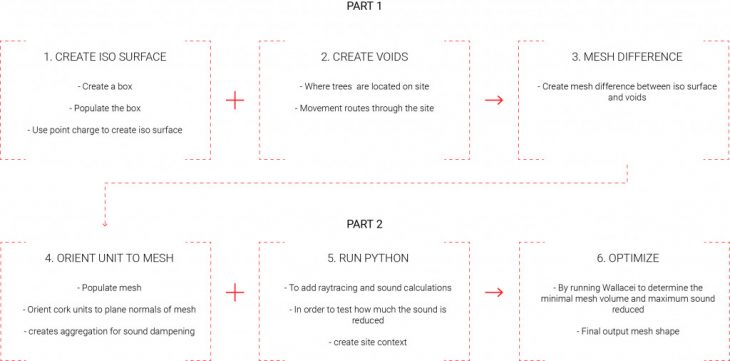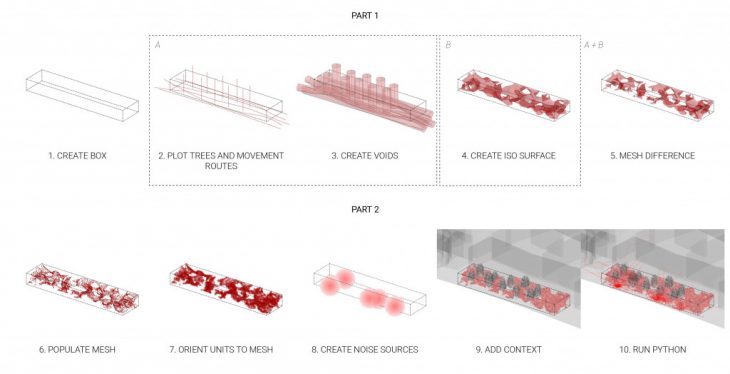PORO(CITY) // sound dampening aggregation

// BRIEF
The main objective of this assignment is to use evolutionary solvers in order to optimize a project that we are working on in one of our studio or seminar projects. With the use of an evolutionary solver, students would need to understand the objectives and fitness values that would determine the optimal solution in the architectural environment. The outcome of the assignment would be a series of optimized elements which could be used to drive the chosen project forward.
// PROJECT DESCRIPTION
For this assignment, we chose to use the project we are working on in our studio, Digital Matter. The focus of our project is tackling noise pollution within the city and using a material or materials of our choice to dampen the sound in an architectural way. After a lot of research into the physics and fundamentals of sound and how sound travels within a space, we came up with a combination of material systems and design methodology that could be used to dampen the sound of traffic and pedestrian noise. Cork and lichen are the primary materials chosen for the project as they are both porous materials (and therefore have a high absorption coefficient). The design methodology chosen was granular/aggregation construction. Through the process of dropping these cork units in order for them to interlock and aggregate, as well as the design of the global shape of the aggregation, we could control how the sound is dampened in a space.
// PSEUDO CODE
We chose to use the multi-objective evolutionary solver called Wallacei.


// FITNESS VALUES
We decided to focus on 3 fitness values that would guide the algorithm to the desired outcome.

// PARAMETERS

// CODE

Showing the 3 fitness values and the genetic optimization between them all. The lines represent each generation that is calculated. The blue lines are the most optimal generations as they are the closest to the best objectives of each fitness value.

// CATALOGUE

// RENDER

Genetic Optimization / PORO(CITY) is a project of IAAC, Institute for Advanced Architecture of Catalonia developed at the Master in Advanced Architecture in 2019/2020 by:
Students: Ilaena Mariam Napier, Hanna Lepperød, Ines Cavar & Matin Darabi
Faculty: Rodrigo Aguirre, Ashkan Foroughi
Student Assistant: Ivan Marchuk